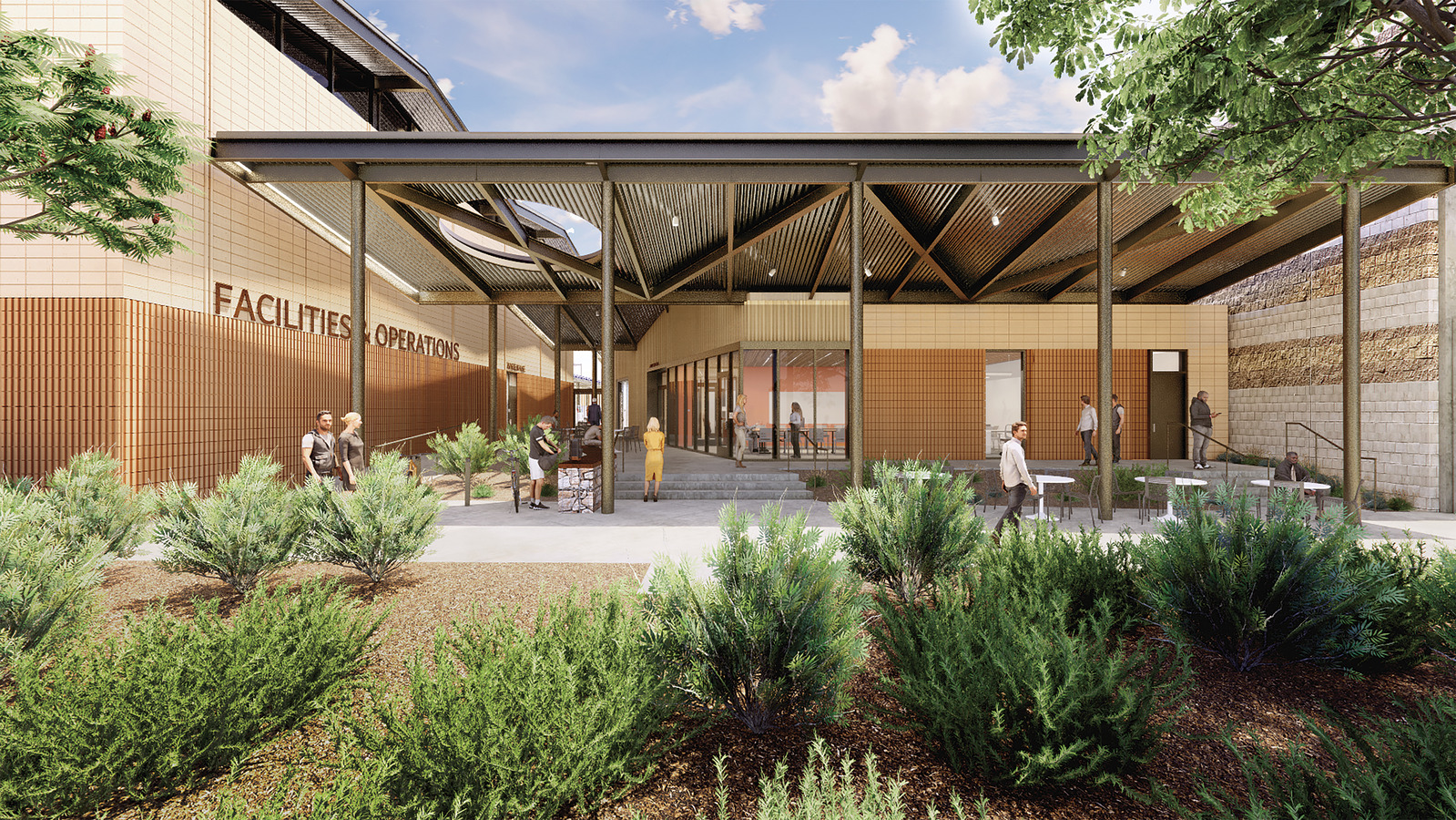Resilience & Sustainability
Getting to Net Positive at Los Angeles Mission College
This new 29,000 sf Facilities Operations Center supports Los Angeles Mission College, one of nine campuses for the Los Angeles Community College District, and provides an exemplar of sustainability, functionality, and contextual response. Slated for construction in 2025, the two-building complex fits a tightly constrained site adjacent to the campus Central Plant, using modular dimensions and highly efficient circulation.
